If you’re hoping to become a great photographer or videographer, utilizing every tool at your disposal is the safest and smartest way to get there. One tool that can level-up your skill set is depth of field. Understanding depth of field is tantamount to not only craft, but to your creativity as an artist. Knowing how to produce sharp images, and when to place objects out of focus, can help you get the shots you want consistently and with intention. But what is depth of field? And what else do you need to know about your camera to use it?
Defining Depth of Field
Use depth of field to your advantage
Understanding what depth of field is and how you can use it will expand your skill set, and enhance the quality of your photos and videos. Let’s first define it and then we’ll get to some real-life examples.
DEPTH OF FIELD DEFINITION
What is depth of field?
Depth of field is the area of acceptable sharpness in front of and behind the subject which the lens is focused. Put simply, it refers to how blurry or sharp the area is around your subject.
A shallow depth of field refers to a small area in focus. Often the subject is in focus, while the background is blurred. This is best for portraits, and one way to adjust this is with aperture.
A deep depth of field captures a larger area in focus, often keeping everything in the image sharp and clear. This is best for landscapes by using a large aperture.
There are multiple ways to adjust depth of field, including aperture, the distance between the camera and the subject, the focal length of the lens, and even the size of the camera’s sensor.
WHAT AFFECTS THE DEPTH OF FIELD?
- Aperture
- Camera-subject distance
- Focal length of lens
- Size of camera sensor
Depth of field is a spectrum and it provides a number of different tyes of camera focus. For a complete breakdown of the available options, watch our episode of The Shot List that is dedicated to depth of field and camera focus.
Ultimate Guide to Depth of Field • Subscribe on YouTube
Knowing that there are many options to manipulate depth of field, you can approach your next shot list with these in mind. Before we get into how each factor can help you adjust your depth of field, watch this quick video covering the basics on how to actually achieve these options.
Depth of Field or (DoF) essentials
It's really that simple: aperture, focal length, and distance to the subject. When you understand how the combination of these settings work in tandem, you can start capturing professional and dynamic looking images with even the most basic equipment.
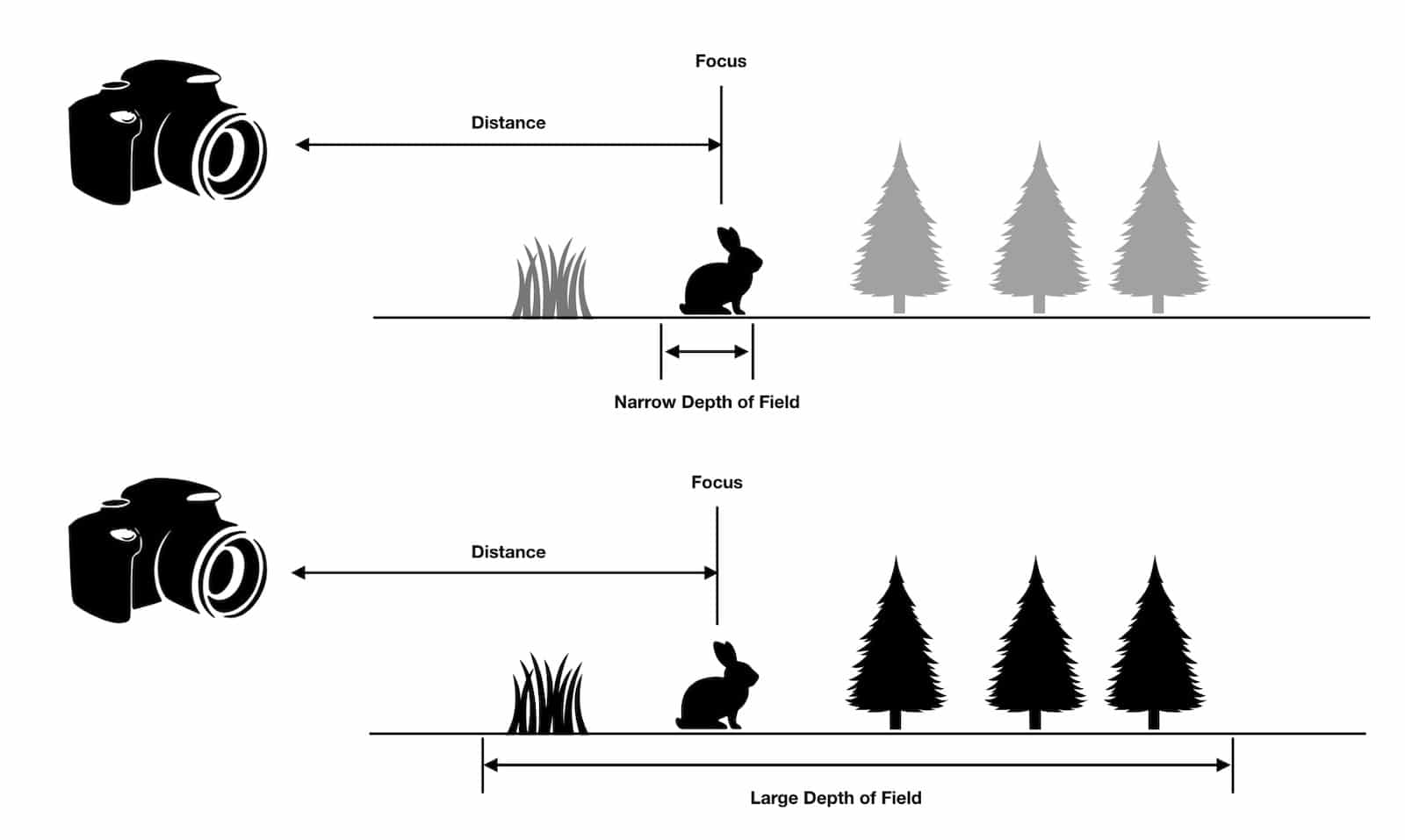
DoF diagram
Now that we have a firm grasp on what depth of field is, we can explore how to adjust it. The ability to control it will allow you to photograph various subjects in various situations, making you a more professional and well-rounded image maker.
Related Posts
Depth of Field Camera
How to adjust your depth of field
As mentioned in the depth of field definition above, there are several factors that affect it.
Let’s start with the most common ways of manipulation: aperture.
Aperture Definition
What is aperture?
Aperture is the opening of the lens through which light passes. When you hit the shutter release button to take the picture, a hole opens to capture the image. The aperture is the size of that hole. Aperture affects the light of the image and the sharpness.
The larger the hole, the more light gets in, and the smaller the hole, the less light. Also, the larger the aperture, the blurrier the image, the smaller the aperture, the sharper the photo or video.
Aperture is calibrated in f/stops. F/stops are written in numbers like 1.4, 2, 2.8, 4, 5.6, 8, 11 and 16.
But the higher the number is actually a smaller aperture, or smaller hole.
What is Aperture? • Subscribe on YouTube
A low f/stop indicates a larger aperture. And a high f/stop indicates a smaller aperture. See the graphic below.
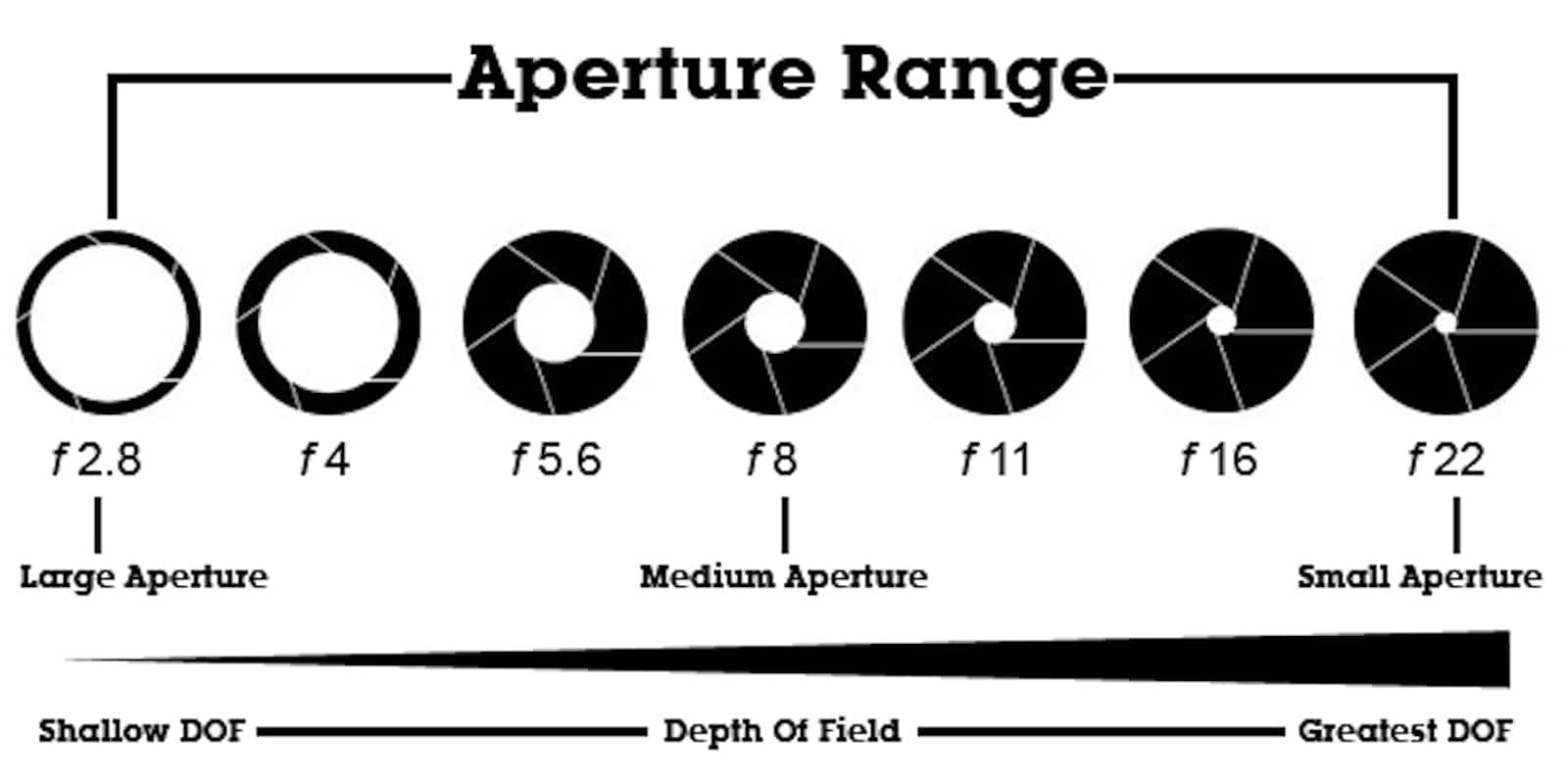
The interplay between aperture and DoF
How can we adjust the f/stops on our camera to get the image we want?
Remember a large aperture (low f/stop) can also create blur in your photograph. If you want an image where the subject is isolated, keep your f/stop low, so your subject is the only thing in focus. Again, this is called a shallow depth of field. See the image below: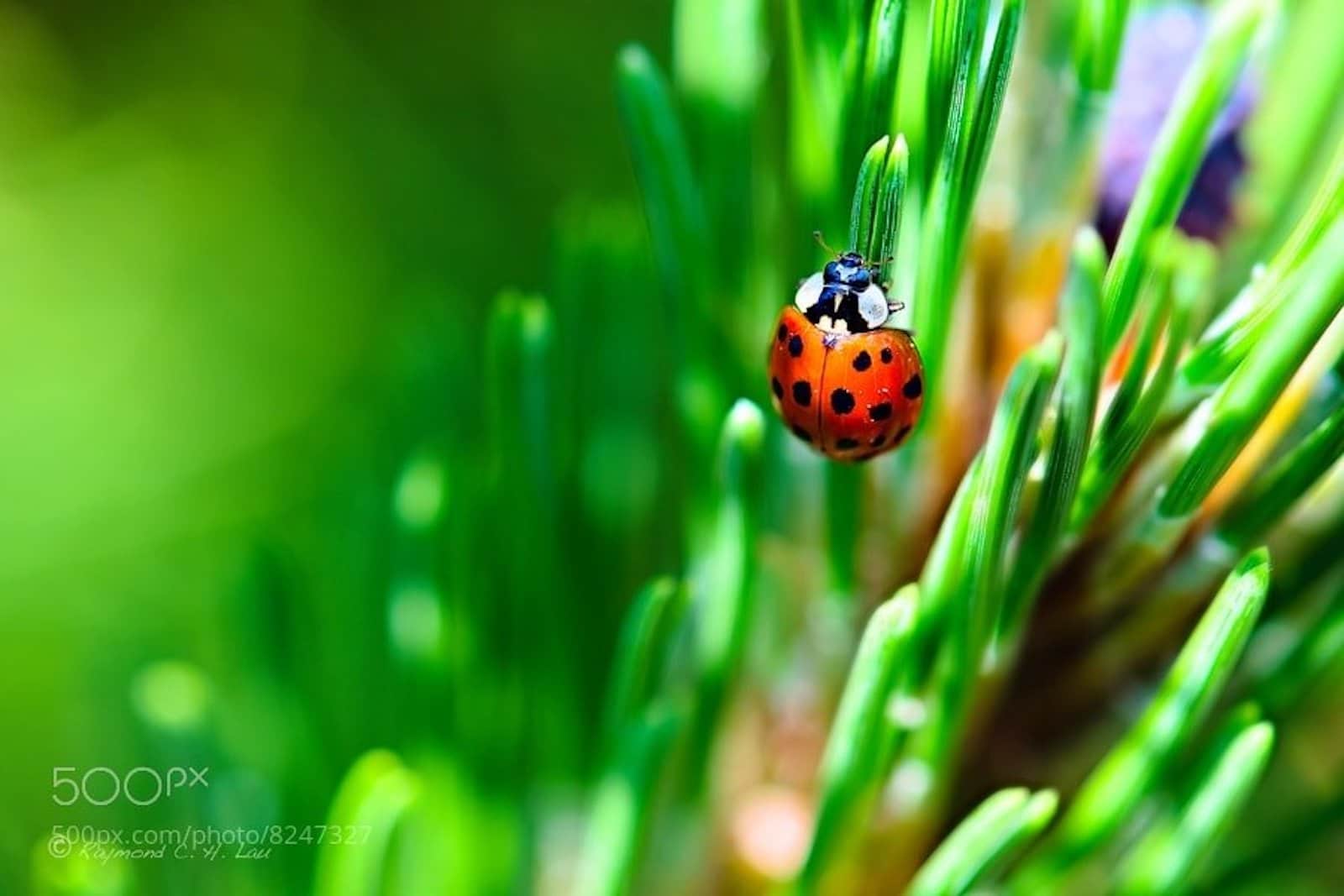
Shallow Depth of Field
Related Posts
If you have a small aperture, where the opening is tiny, (a high f/stop), the greater the depth of field, and the sharper the background. This is often referred to as a “deep” or “large” depth of field.
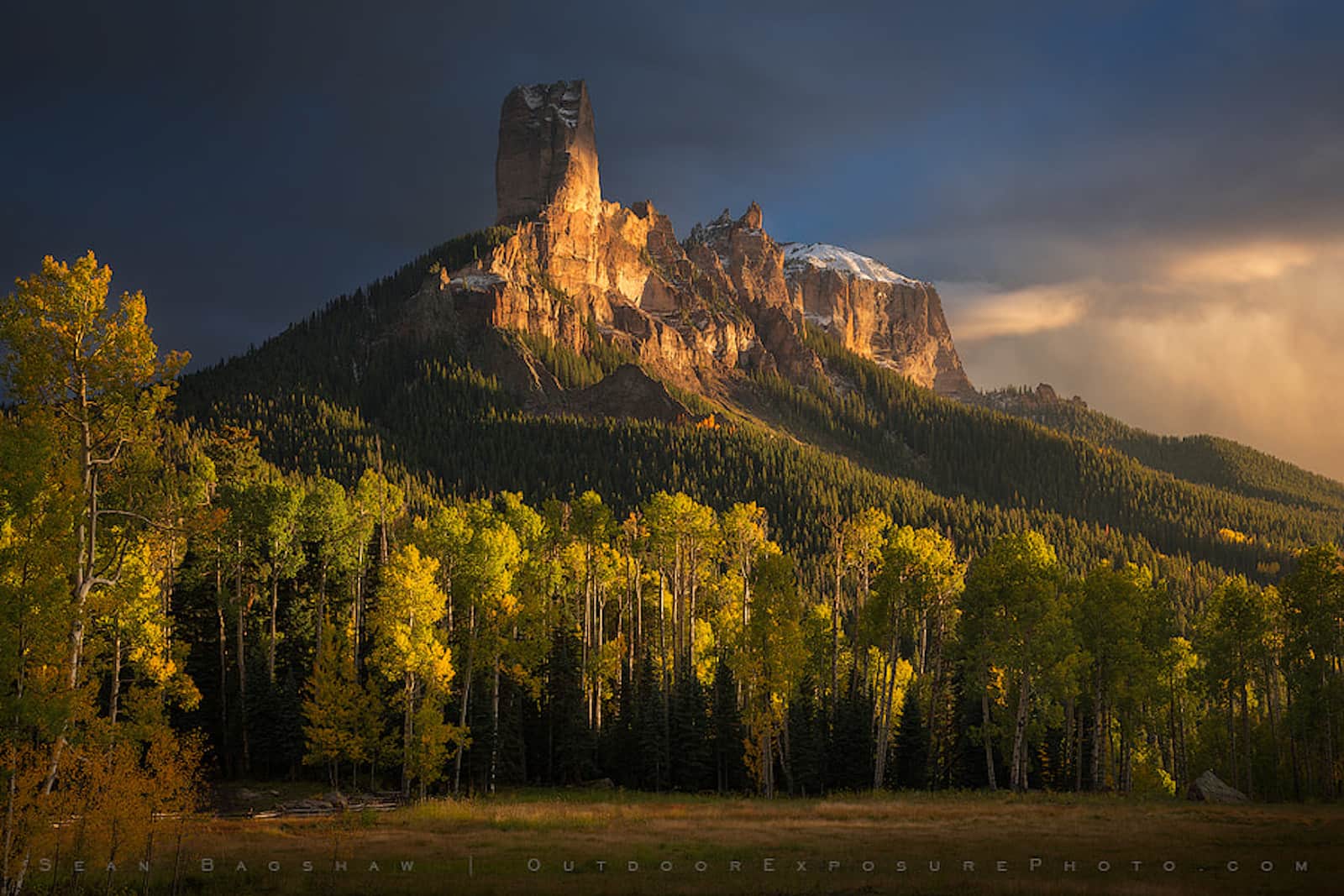
Deep Depth of Field
Aperture works in connection with two other key players — shutter speed and ISO. Knowing how these elements work together will give you full grasp on how aperture works.
Camera-Subject Distance
Where you place the camera in relation to your subject can also affect your depth of field.
The closer the camera is to your subject, the more shallow the focus will be. The background will be blurry and out of focus.
If the subject is positioned far away from the camera, the entire image will appear sharper with a large or deep depth of field.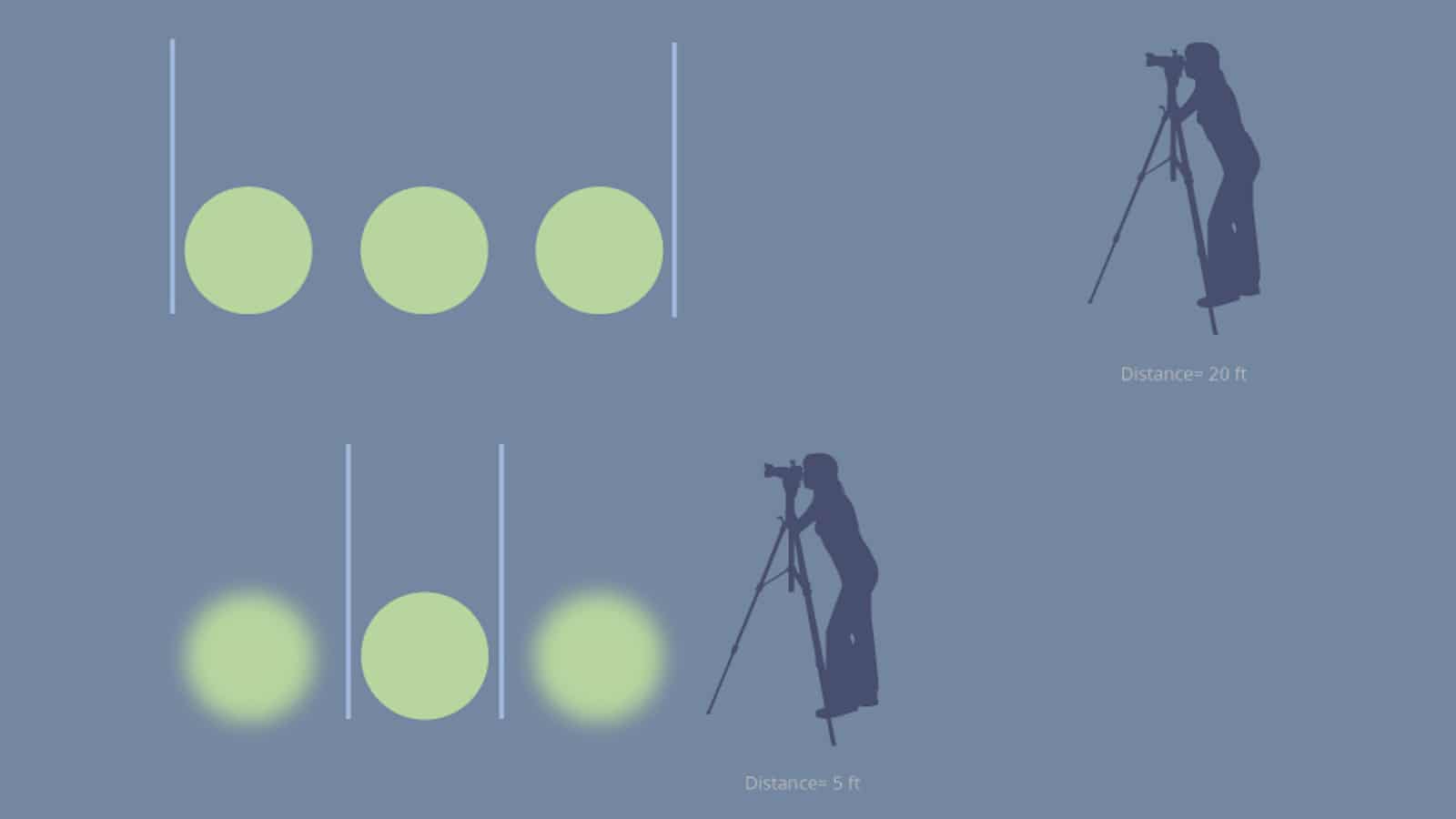
Closer you are to the subject, the blurrier
Focal length
A short focal length (or wide-angle lens) will usually have a deeper depth of field. And a longer focal length, like a telephoto lens, will often have a more shallow depth of field. You can see below as the lens gets longer, the image around the subject gets blurrier.
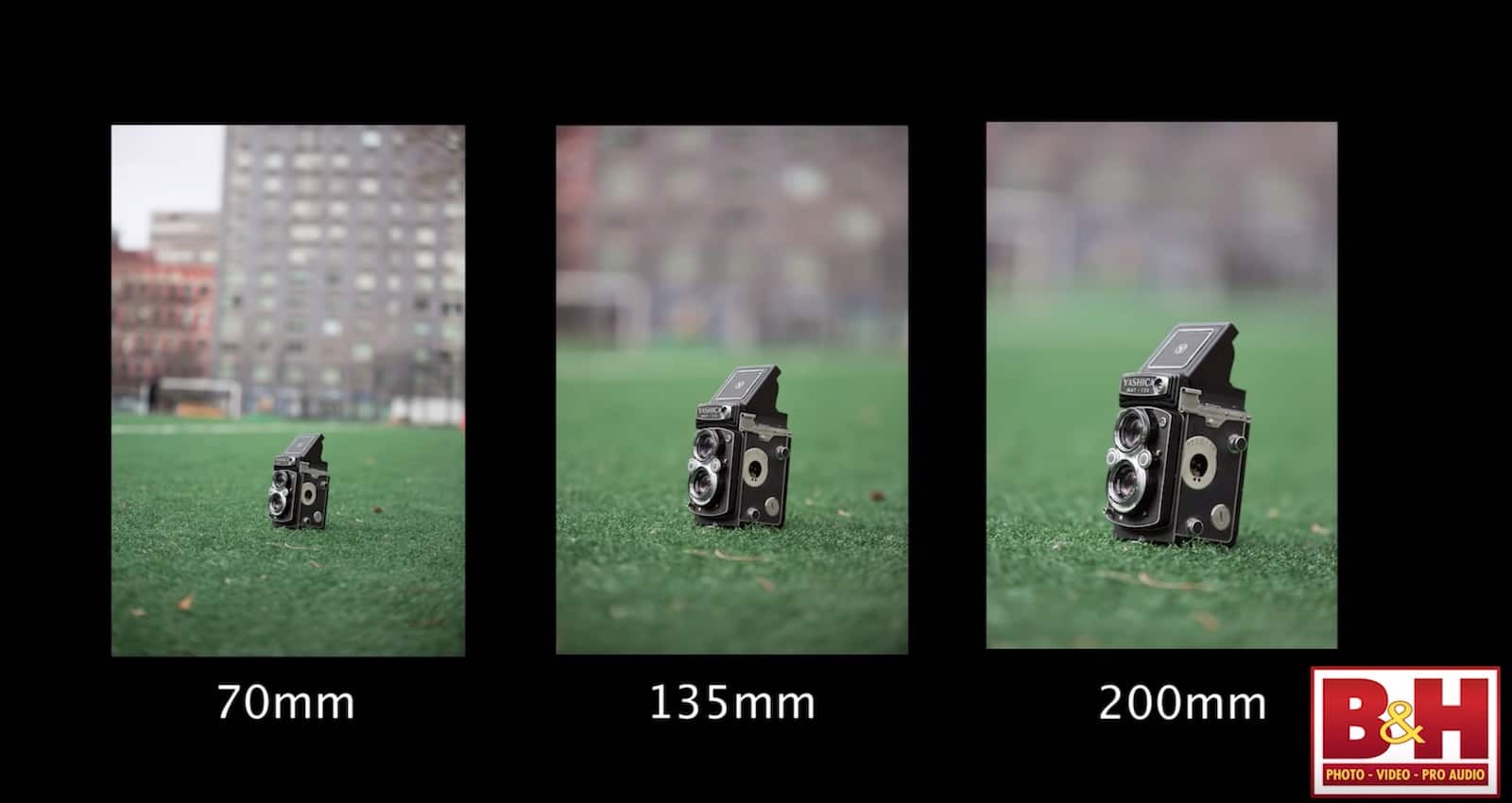
The longer lens focal length, the blurrier
Though this isn’t always true. How far away the camera is from the subject will also affect this. But if we increase the length of the lens and keep the same camera-distance, then this remains the case.
Related Posts
Wrapping Up Depth of Field
Quick recap
We went over quite a bit, and when you’re out on the field, it may be difficult to remember the practicals.
Increasing depth of field for sharpness:
- Narrow the aperture (make it smaller by increasing f-number)
- Move away from the subject
- Use a lens with a shorter focal length
Decreasing depth of field for blur:
- Widen the aperture (make it bigger by decreasing the f-number)
- Move closer to the subject
- Use a lens with a longer focal length
You can do a ton of really cool things when you know how to use aperture, camera distance, and focal length to manipulate your DoF. With a mastery of depth of field in your toolbox, you're well on your way to becoming a stronger and more creative photographer.
Related Posts
Up Next
What is bokeh?
If you want to deliberately create creative looking blur in your shots, check out our next article on the Bokeh Effect. Now that you have a better grasp on depth of field and aperture, bokeh won’t be too complicated to learn. Time to level-up your skill set!
Up Next: What's bokeh? →
Showcase your vision with elegant shot lists and storyboards.
Create robust and customizable shot lists. Upload images to make storyboards and slideshows.
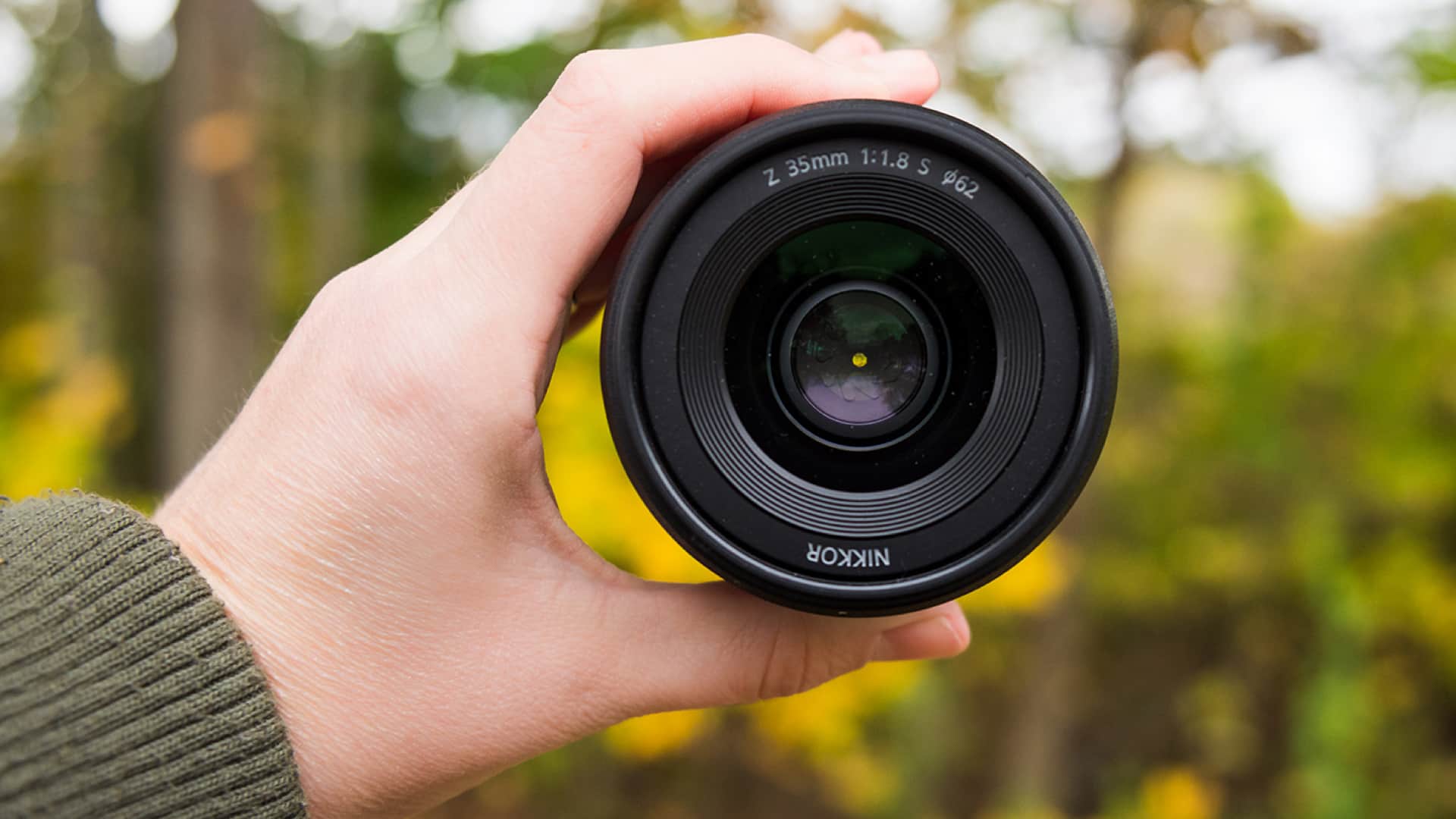
Comprehensive and most enlightening on a difficult topic Much appreciated